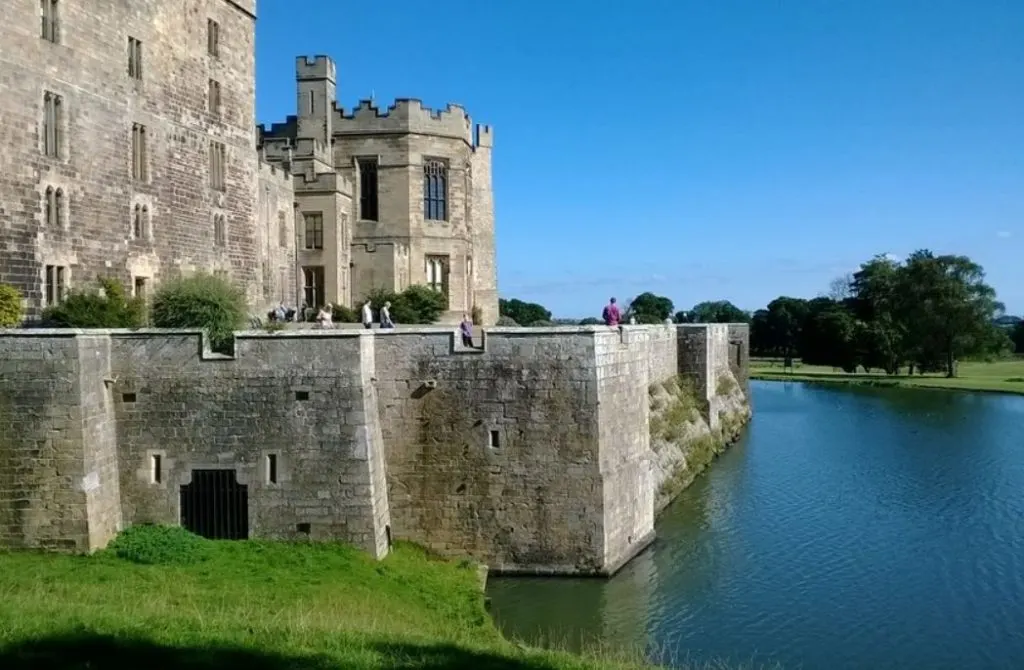One of the great castles in England can be found near a small village in the northern part of the country.
In this article, we take a closer look at some of the most interesting facts about Raby Castle, a fascinating medieval landmark.
1. It’s located in the County Durham in North East England
Raby Castle is a medieval fortress located in County Durham, a ceremonial county in North East England. It’s situated within the borders of the small village of Staindrop and is surrounded by a deer park that covers an area of 81 hectares (210 acres).
This village is located about 9.7 kilometers (6 miles) northeast of Barnard Castle, another famous castle in the area located in the town with the same name.
Not too far away are the major cities of Middlesbrough (directly to the east, Sunderland, and Newcastle upon Tyne (both to the northeast).

2. The castle got its name from an 11th-century Viking residence
Perhaps one of the most remarkable facts about Raby Castle is that it got its name from a Viking Settlement that was established in this area in the 11th century.
King Cnut, also known as Canute II the Great and the self-proclaimed “Emperor of the North,” founded the estate of “Rabi,” a word that derives from the Danish “Ra,” which means “boundary,” and “Bi,” which means “dwelling.”
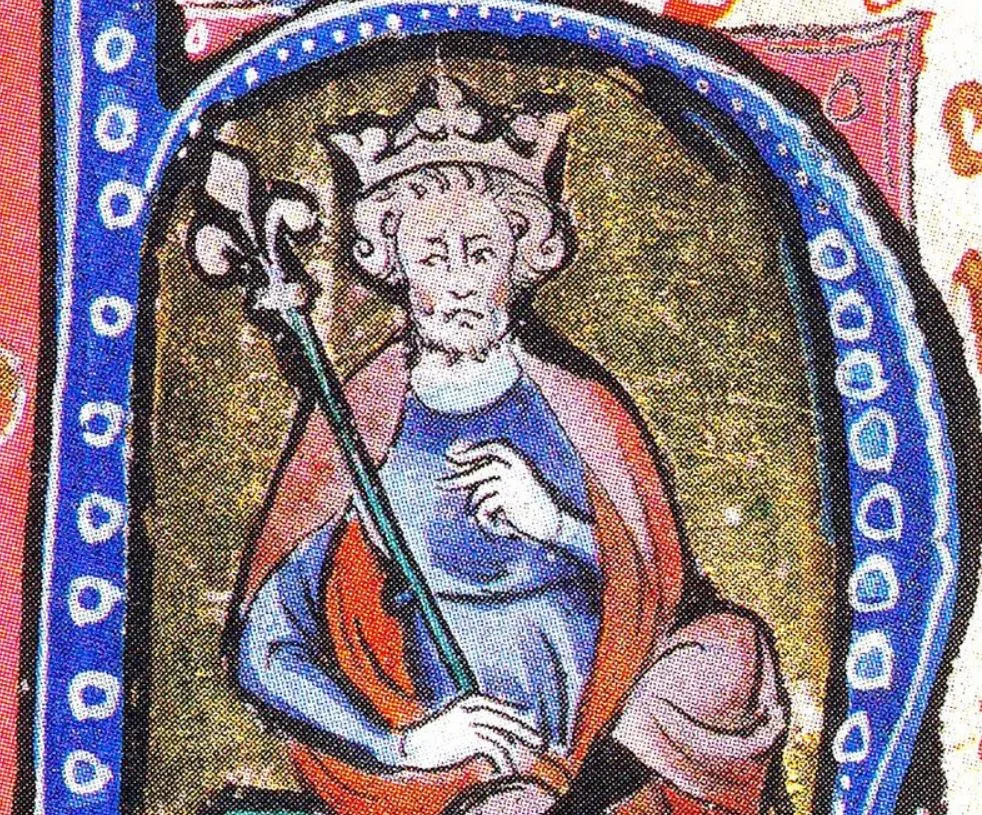
3. It was the site of the 12th-century “Manor of Raby”
Whether or not King Cnut actually built a mansion on the site remains unknown, but the original manor house on the location of the castle was owned by the house of Neville in the 13th century.
Ralph Neville, 1st Baron Neville de Raby (1262-1331) was the first member of the family to officially receive a formal title as well and they were referred to as the Barons of Raby since 1295.
It’s possible that from then on, a fortified structure was located here and Raby became the seat of the House of Neville.

4. The castle was built in the late 14th century in about 23 years
Because of the close ties between the Neville’s and the House of Lancaster, which had their seat at Lancaster Castle in North West England, they became one of the most powerful families in northern England.
The current castle was built in the second half of the 14th century between 1367 and 1390 by John Neville, 3rd Baron Neville (1337-1388).
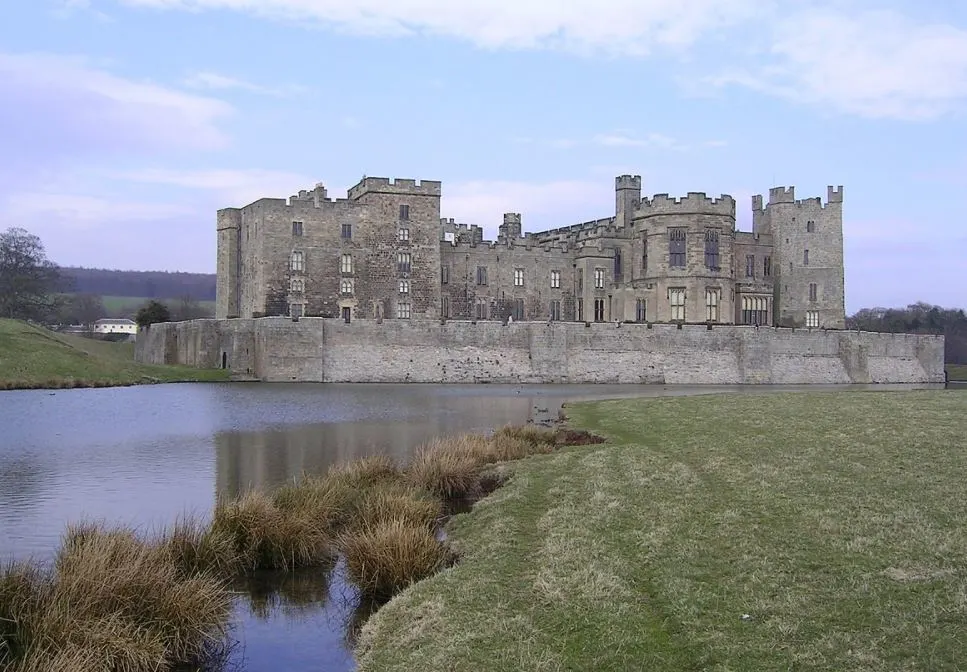
5. The fortified castle was built at a monumental scale
It wasn’t until the year 1378 that Thomas Hatfield, the Bishop of Durham, granted John Neville a license to fortify his castle. To emphasize his power in the region, he constructed the castle on an enormous scale.
The fortification was so huge that it was described as ” a transition from a defendable house into a palace-fortress!” Unfortunately, no paperwork of this period remains so the details about the project are lost in history.
The result, however, remains clear until today as the castle consists of 9 defensive buttress towers, the 4-story “Neville Gateway,” and an enormous curtain wall.
The castle was originally also surrounded by a moat and could only be accessed via a drawbridge.

6. A woman who produced 2 kings was born at the castle
The son of John Neville, Ralph Neville, was made Earl of Westmorland on September 29, 1397, by King Richard II himself. This further emphasized the level of influence the family had acquired during the 14th century.
Following the deposition of Richard II in 1399, Ralph was even made Earl Marshal of England by the King’s successor, Henry IV, in 1403.
It was in the decades following these events that Cecily Neville, Duchess of York (1415-1490), gave birth to two future Kings of England, Edward IV, and Richard III.

7. The castle became royal property following a failed rising in 1569
The Earls of Westmoreland lived at the castle until the 16th century. It remained their official seat of power until Charles Neville, 6th Earl of Westmorland (1542-1601), a fervent Catholic, became the leader of the so-called “Rising of the North” in 1569.
The event is also referred to as the “Revolt of the Northern Earls” and was a rebellion against England’s Protestant Queen Elizabeth I.
It eventually failed and even though Charles Neville managed to flee to Spain and live in obscurity for the rest of his life, the castle ended up officially being seized by the Crown in 1571.

8. It was bought by the House of Vane in 1626
The castle remained royal property for exactly 43 years until it was bought by Sir Henry Vane the Elder (1589-1655). He bought the castle together with 2 other properties in County Durham, Barnard Castle, and Long Newton, at a cost of about £18,000.
Sir Henry Vane was so impressed by the sheer size of the castle and its surrounding lands, which is quite contrasting to that of Barnard Castle which is located within a village, that he turned it into his official residence in the north during the 17th century.
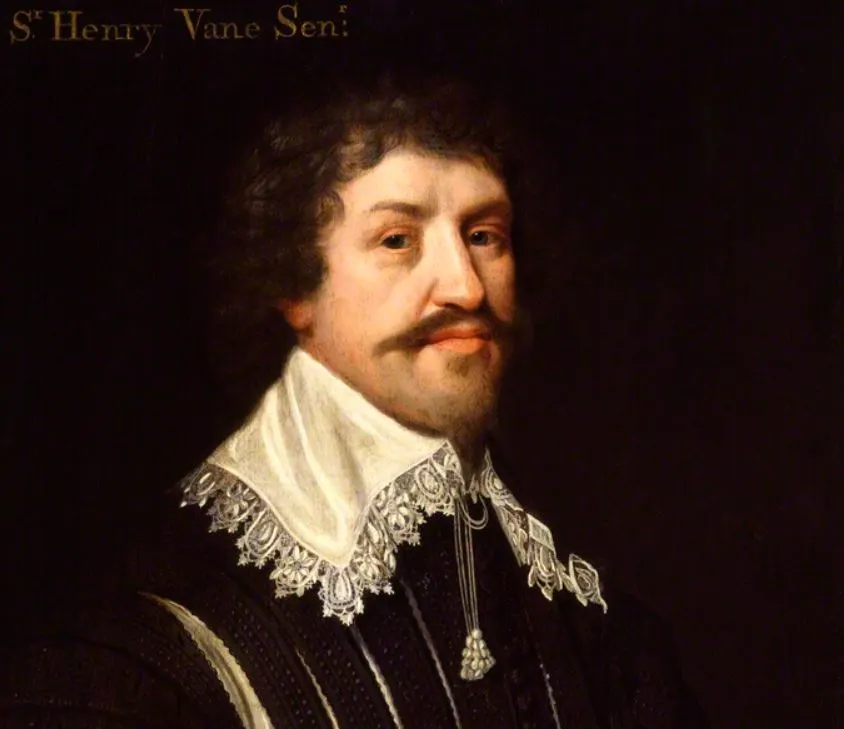
9. The castle was renovated between the 17th and 19th centuries
Even though the core structure has the same layout as the original medieval castle, the structure was completely modernized by the House of Vane in the following centuries.
Even though a carriageway was constructed right in the middle of the castle which altered the medieval structure significantly, most of the renovations happened on the interior. The medieval chapel and drawing room were completely renovated and new roofs were added during another serious renovation project between 1843 and 1848.
The castle and its magnificent surroundings also became a popular spot for artists of the Romantic period and it has been painted by artists such as J.M.W. Turner in the 19th century.
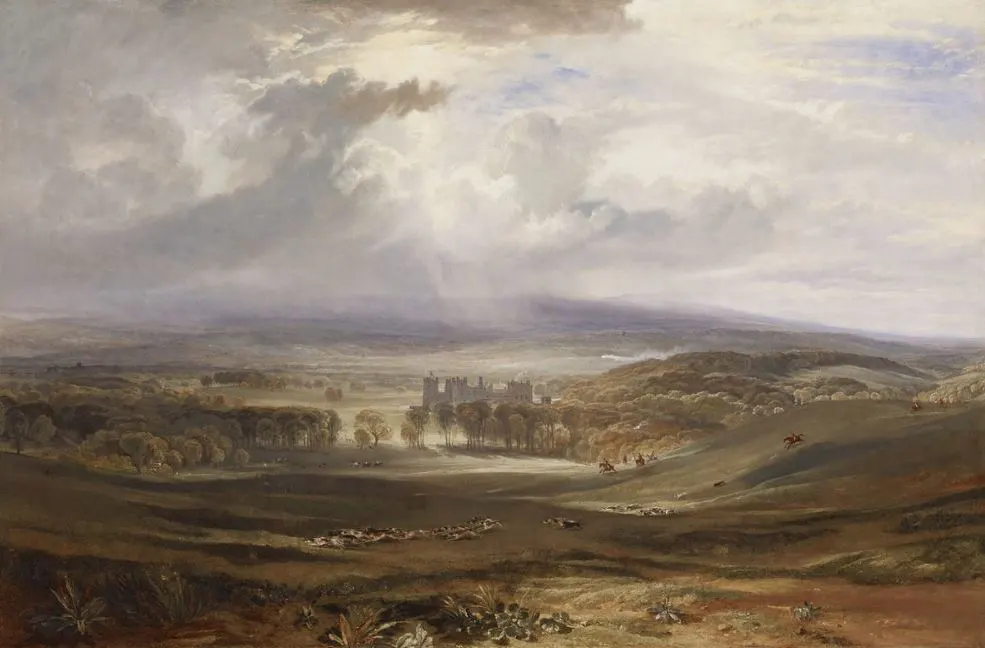
10. The walled garden dates back to the mid-17th century
The original version of the fascinating walled garden of the castle was created in the mid-17th century, replacing the original small garden that was solely used to grow vegetables and medicinal plants.
Just like the castle itself, this landscaped park was continuously altered and now forms one of the major attractions of the park. It’s designed with ornamented fountains, amazing walking and bicycle paths, and of course, the Raby deer!

11. The castle houses a remarkable collection of fine art
Perhaps one of the most intriguing facts about Raby Castle is that its interior is decorated with numerous fine works of art, including artworks by Old Masters such as Sir Anthony van Dyck, Sir Joshua Reynolds, and Jacopo Amigoni.
Perhaps one of the most fascinating artwork is a sculpture called “The Greek Slave,” completed by famous Neoclassical artist Hiram Powers (1805-1873) in 1844. The castle holds the first marble version of this famous work!

12. Raby Castle is open to the public to visit
Do you want to visit Raby Castle? You can! The castle and the amazing park and gardens surrounding it are open between Wednesday and Sunday.
Because the castle and its surroundings have so much to offer, you can easily spend the entire day here and have a wonderful time!
